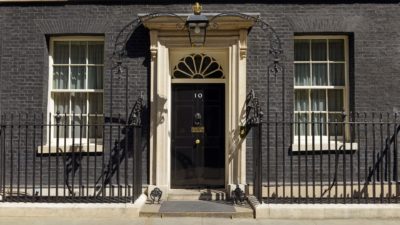The cooling UK property market means the nation’s estate agents are set to face new challenges. One modern estate agent, Nested, takes a look at how these challenges might be overcome.
Cooling house prices
While the latest sold price data from the Land Registry shows that house prices remain 12.6% higher than they were the previous year, there are clear signs that the tide is starting to turn.
The latest data shows that the monthly rate of house price growth has fallen to 0.3%, the third consecutive monthly reduction, down from 2% between July and October of last year.
What’s more, the Nationwide House Price Index for November of last year recorded a -1.4% monthly decline in house price growth, while Halifax reported a -2.4% monthly drop during the same month.
While monthly house price movement can be erratic and doesn’t quite demonstrate the overall health of the market, the latest figures on mortgage approvals from the Bank of England show further signs of a market running low on steam.
Mortgage approvals down
The latest figures show that approvals fell between October and November to 46,075, also down on the 68,969 seen in November of last year (2021), the lowest level since the start of the pandemic.
Such a severe reduction in buyer activity is certain to have spurred the immediate declines in house price growth seen via Nationwide and Halifax and it’s only a matter of time before this reduction causes a similar decline in sold prices.
New stock declining
Listing data from Rightmove has also shown that the level of new homes to have entered the market in the last two weeks has almost halved (-46%) when compared to the level of new stock entering the market in November.
Things to consider
This presents the nation’s estate agents with a number of things to ponder.
With new instructions declining, competition will be high to win new business.
But with the market at a tipping point between a pandemic price boom and a cost of living cool down, the extent to which they entice buyers when valuing their homes in the current market is vital.
Failure to acknowledge the changing face of the market will result in an over-exuberant valuation, the result of which is stock left to languish on the portals with little to no buyer interest.
Valuing too high to initially win business before advising on a price reduction will also lead to a drawn out sales process.
Both of these factors will only slow the market further and could cause a continued decline in house prices.
Of course, no seller wants to accept that their home may be worth less but the reality is that since purchasing, they should still be selling for a higher price.
Good communication between agents and clients, not to mention agents and potential clients, will be the key to helping sellers understand the current market, the best price they can achieve and the quickest way to go about achieving it.
Alice Bullard, Managing Director at Nested, the modern estate agent, commented:
“Agents could be feeling concerned about the 2023 housing market given the doom and gloom that’s been portrayed in the media, particularly given the latest numbers from Nationwide and Halifax showing property values have now started to decline, with mortgage approvals also on the slide.
However, the silver lining of reducing property values is the benefit to buyers which should help maintain a consistent level of demand.
But agents must be sure that when looking to win business they don’t value properties with too much enthusiasm.
Sellers may well expect a little wiggle room during the negotiation stage, but enticing them onto the books with unrealistic market valuations certainly won’t help sell homes.”
| Table shows change in UK house price between Sep 2021 and the latest available data as reported by four major UK house price indexes (HPIs) | ||||
| Date | Land Registry | Halifax | Nationwide | Rightmove |
| Sep-21 | £269,003 | £267,587 | £248,742 | £338,462 |
| Oct-21 | £263,680 | £270,248 | £250,311 | £344,445 |
| Nov-21 | £268,195 | £273,028 | £252,687 | £342,401 |
| Dec-21 | £268,809 | £275,996 | £254,822 | £340,167 |
| Jan-22 | £274,073 | £276,645 | £255,556 | £341,019 |
| Feb-22 | £274,365 | £278,894 | £260,230 | £348,804 |
| Mar-22 | £275,753 | £283,001 | £265,312 | £354,564 |
| Apr-22 | £279,228 | £286,242 | £267,620 | £360,101 |
| May-22 | £282,433 | £289,666 | £269,914 | £367,501 |
| Jun-22 | £285,691 | £293,586 | £271,613 | £368,614 |
| Jul-22 | £291,378 | £293,173 | £271,209 | £369,968 |
| Aug-22 | £294,598 | £293,992 | £273,751 | £365,173 |
| Sep-22 | £294,559 | £293,664 | £272,259 | £367,760 |
| Oct-22 | – | £292,598 | £268,282 | £371,158 |
| Nov-22 | – | – | £263,788 | £366,999 |
| Change since start of BofE rate increase (Dec 21) | 9.60% | 6.00% | 3.50% | 7.90% |
| Table shows upcoming UK house price change according to forecast from the Office for Budget Responsibility (OBR) with prices based on an average of four major HPIs | ||||||
| Date | OBR forecasted annual price change % | Land Registry | Halifax | Nationwide | Rightmove | Average |
| 2022 Q4 (or latest available) | – | £294,559 | £292,598 | £266,035 | £369,079 | £303,302 |
| 2022 Q4 to 2023 Q4 | -6.10% | £276,594 | £274,753 | £249,810 | £346,570 | £284,805 |
| 2023 Q4 to 2024 Q4 | -2.80% | £268,769 | £266,980 | £242,743 | £336,765 | £276,747 |
| 2024 Q4 to 2025 Q4 | 2.50% | £275,426 | £273,593 | £248,755 | £345,106 | £283,602 |
| 2025 Q4 to 2026 Q4 | 3.30% | £284,401 | £282,508 | £256,861 | £356,352 | £292,843 |
| 2026 Q4 to 2027 Q4 | 3.60% | £294,574 | £292,614 | £266,049 | £369,099 | £303,318 |
Sources:
Land Registry HPI
Halifax HPI
Nationwide HPI
Rightmove HPI
OBR house price forecast























Comments